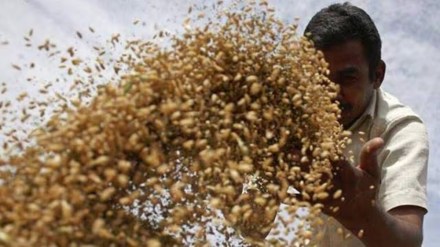During his recent campaign rallies in Madhya Pradesh and Chhattisgarh, prime minister Narendra Modi declared an extension of the Pradhan Mantri Garib Kalyan Anna Yojana (PMGKAY) for five more years. The provision related to free rations under PMGKAY was to lapse in December 2023. It is a welcome step, particularly for families still grappling with economic distress. But can rice and wheat comprise healthy diets for individuals? And does 67% of the population continue to be under duress, needing support from free rations?
The PMGKAY
The Public Distribution System (PDS) of the 1940s became targeted PDS (TPDS) in 1997, and then with further changes, became the National Food Security Act (NFSA) in 2013. In January 2023, NFSA became PMGKAY.
India runs the world’s largest food-based welfare programme in the world. Via its commitment to deliver at least 60 million tonnes (mt) of rations (mainly rice and wheat) annually to 813 million identified beneficiaries, India’s PDS/NFSA/PMGKAY becomes a mammoth to maintain and manage. As per National Statistics Office (NSO), the average Indian consumes about 10 kg cereals per month. Under the PMGKAY, the government provides 5 kg, or half of the individual’s monthly cereal needs, for free.
Selling price of rations under PMGKAY
Quite like its name, the programme too has evolved over the years. From the identification of beneficiaries to the price at which the rations are sold (referred to as the central issue price or CIP)—all have undergone changes since the 1940s. In 2013, under NFSA, the CIP for rice, wheat, and coarse cereals was set at Rs 3, Rs 2, and Rs 1 per kg respectively. These CIPs were reduced to zero in January 2023 for a year. During the rallies last week in poll-bound Chhattisgarh and MP, PM Modi extended these “zero CIPs” for another five years, i.e., till December 2028.
For a PMGKAY beneficiary household, zero CIPs or free rations saves them about Rs 50-105 per household per month. This implies an annual saving of about Rs 600-1,260 per family. For poor families, this support matters. As per the recently released Bihar caste survey report, one in every three families in Bihar live on around `200 per day. Also, with rice and wheat inflation reaching double-digits since the last year, a surety of free food can give relief to many households in the country.
Focus on nutrition
As per the recently released FAO’s State of Food Security and Nutrition in the world 2023, about 74% of Indians or one in three cannot afford healthy diets in India, as shown in the accompanying graphic. But can access to free rice and wheat provide nutrition to economically vulnerable Indians?
In a recently-conducted survey of PMGKAY beneficiaries by Arcus Policy Research, where a state has become an accidental pioneer in DBT cash whereby it is giving an unconditional cash transfer together with the free rations under PMGKAY, it was found, inter alia, that the cash received by these beneficiaries was used to buy better rice and pay for diversified meals including eggs, meat, and also for meeting expenditures on education and health.
As Indian states differ in their levels of nutritional-deprivation and economic strength, a one-fit all solution of a food-based welfare system cannot be the way forward. In states like Punjab for instance—it feeds the entire country—instead of distributing rice and wheat, can the Centre consider offering cash in lieu of grains? Then, in others like Bihar, with huge economic disparities, the government may consider strengthening its PMGKAY system with an openness to review once the state strengthens economically.
Way forward
In 2013, when the NFSA was passed, there was a provision to revise the CIP upwards in three years. Not surprising for many, no upward revision happened in the CIP despite sharp increases in the economic costs of handling the grains. Contrarily, the prices have been reduced to zero now. Any upward revision in CIPs, though desirable on economic front, may not be a likely political outcome—at least in the close future. In that case, the Centre would do well to at least rethink the PMGKAY coverage of the 67% of the population.
We see the Indian economy showing resilience among global crises by sustaining its fast growth trajectory. But has the growth resulted in upliftment of the bottom of the pyramid? In absence of any data about the Indian consumers (the last NSO data released is for year 2011-12), policy changes can be tricky. We all await the official data on consumption and the overall Census results to know the level of deprivation in the country.
(The Author is Agricultural economist and co-founder, Arcus Policy Research)
